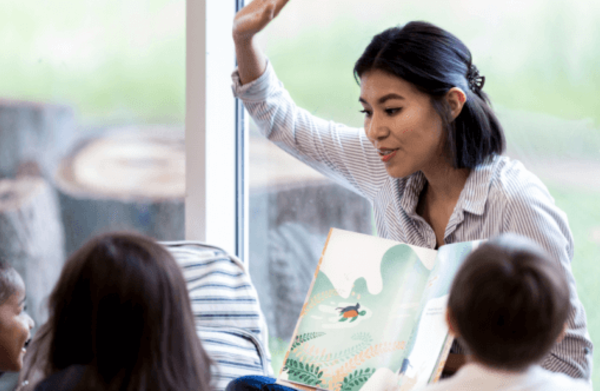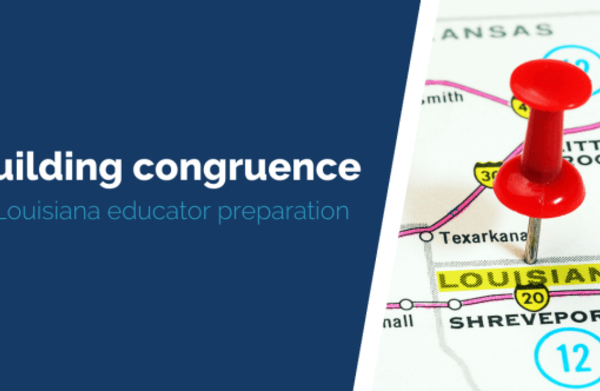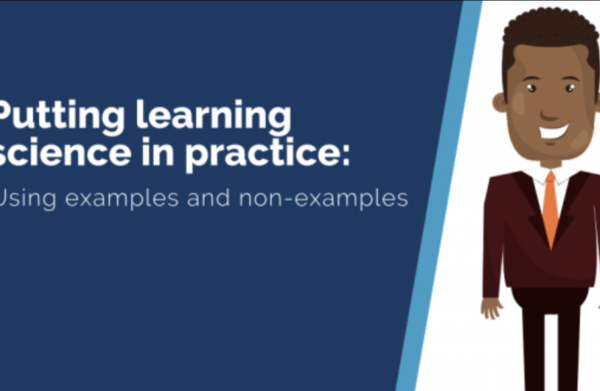Posted on
Working with different tools: How learning science helped Acqualyn Polk to rethink her ELA instruction
Categories: Literacy, Teaching Practice, Cognitive Science, Learning by Scientific Design
On a bright winter day in a classroom 30 miles north of the Louisiana coast, a class of third-grade students listened carefully as their teacher, Acqualyn Polk, explained the difference between “like” and “as.”
“Now, I’m going to read a passage,” she told the class. “Raise your hand when you hear the simile.”
As she started to read, hands shot up across the room. Hmm, she thought to herself. I know I didn’t read a simile yet. She skimmed back over the text and saw the problem sentence: “George likes ice cream.”
“It dawned on me that I didn’t stress the part about comparing two things using ‘like’ or ‘as’ – they were focused more on the words ‘like’ and ‘as,’” she explained later. “I had to backtrack and go back and get their focus on comparing.”

The realization that she needed to focus her students’ attention on the key concept underlying similes — comparison — was a direct result of her training through the Louisiana Resource Center for Educators, a nonprofit alternative teacher-certification program. For the last two years, LRCE has worked with Deans for Impact to center learning science in their curriculum. The program equipped Polk with the tools to evaluate her own instruction and use learning science to inform it.
After she centered her students’ attention on the concept of comparison, she tried reading the passage again. A little boy named Jaden raised his hand excitedly.
“I got one Ms. Polk!” he exclaimed, and correctly named the simile example. “You know what that is?”
“An ‘aha’ moment?” Polk suggested, beaming with pride.
“Yes! The lightbulb just turned on in my head!” Jaden said.
Embracing teaching
Acqualyn grew up dreaming of being a teacher. She taught at summer camp and in Sunday School and worked as a substitute teacher. When she saw a posting for a third-grade English Language Arts teacher in her hometown of New Iberia, Louisiana, she knew she had to apply.
“I emailed the principal, and she told me to come in the next day. I was hired 30 minutes later,” she said.
With no formal teaching training, she relied heavily on the district’s curriculum, going line by line through the materials to instruct her classes. But it didn’t seem to be connecting with students.
“I cried so much during my first year. I was going home frustrated every night because I was just getting blank stares,” she recalled.
Relief came when her principal suggested she enroll with LRCE to earn her teaching certification.

“When I started with LRCE, I realized that it’s about the students learning the material, not just me moving through it,” she said. “So I have to create an environment where my students are motivated to learn, and then I have to focus on what I know the end goal is for them to learn, instead of just flying through the lesson.”
Putting learning science into action
As part of her certification through LRCE, Acqualyn learned about some of the core principles of learning science and how to put them into practice.
One of those core principles is that students learn better when teachers help them think about and process the meaning of new content. For Acqualyn, putting this principle into practice meant redesigning her instruction to provide students with better opportunities to think deeply.
“I realized that some of the stuff I was spending time on I probably shouldn’t have,” she said. “At the end of the lesson, I would give an exit ticket, and the students pretty much didn’t know anything. But now I know it’s because I was filling their minds with everything that was not the to-be-remembered content.”
One way she changed her teaching was by incorporating questions that prompted students to engage in more complex, effortful thinking. Research from cognitive psychologists suggests when students process deeply, or think effortfully, meaning is assigned to new information and connected to other information in long-term memory.
“Now that I understand effortful-thinking questions, I have students explain their reasoning. When they share their answers with the class, I ask them to explain how they got that answer. Then, I’ll call on another student, and ask if they can add on to the answer,” she said.

These changes to her instruction based on learning science have resulted in significant changes in her students’ comprehension, she said.
“My students’ passing scores have gone way up now because I know what I need to focus on,” she said. “Before I knew about these things, I would be like, the students are just staring at me, no one is answering questions. Now I realize that they weren’t answering because they weren’t understanding. I had to learn a new way to teach so that everyone is understanding what I’m teaching.”
And it’s working: in a recent module on the book “Because of Winn-Dixie,” in which Acqualyn used effortful thinking questions during instruction, 80% of her students mastered the material. Compare that to a previous lesson on the Louisiana Purchase, in which she didn’t use effortful thinking questions: only 63% of students demonstrated mastery then.
“I didn’t know anything about the science of learning before, and now that I know, I’m making the changes I need to make, and doing things that I know are going to help my students master the content,” she said.
Related Stories:

Blog
Future teachers at Temple University practice using learning science in the field
In a bright classroom in Philadelphia, a group of kindergartners clustered around a table as a teach
March 09, 2022

Blog
Building congruence in Louisiana educator preparation
What does science tell us is the most effective way for humans to learn?
June 24, 2021

Blog
Putting learning science in practice: Using examples and non-examples
his blog post is part of an ongoing series highlighting the work of our Learning by Scientific...
April 09, 2021



